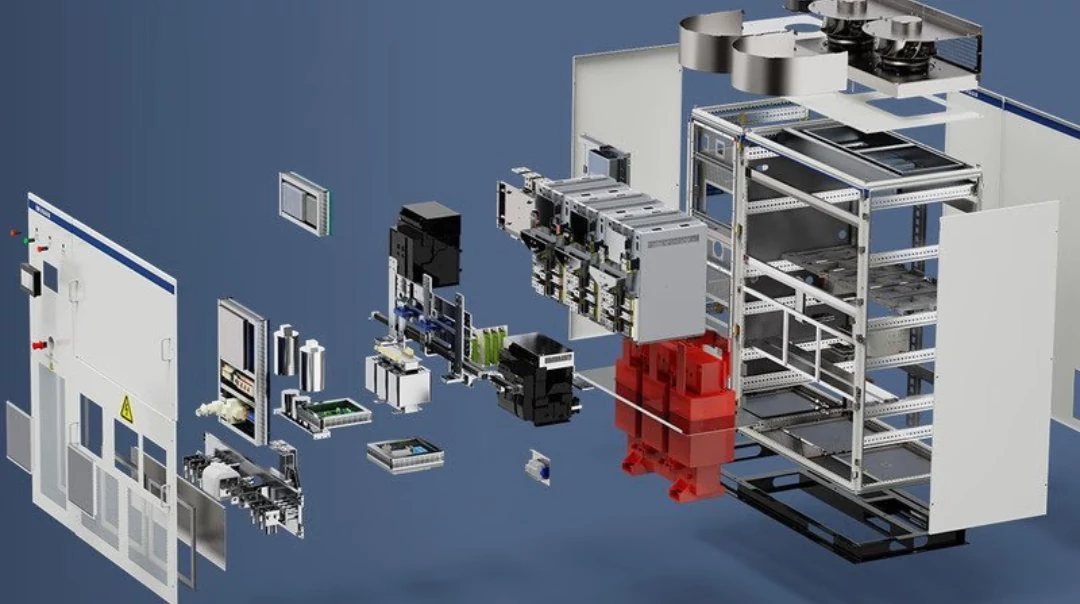EMS development trend Technological innovation With the continuous progress of...
EMS
An energy management system, or EMS, is a collection of software and hardware for monitoring, controlling, analyzing, and optimizing energy systems. It realizes efficient management and optimal allocation of energy through real-time monitoring and intelligent control of all aspects of energy production, distribution and consumption. In the energy storage system, EMS especially refers to the system used to manage the energy storage device, which includes the battery management system (BMS), energy storage converter (PCS), and other subsystems that communicate with the energy storage device.
The core function of EMS is to optimize the scheduling strategy of energy storage equipment to ensure its safe, stable and efficient operation, including battery charge and discharge control, condition monitoring, fault diagnosis, performance evaluation, etc.
EMS system architecture
Energy management system is generally divided into equipment layer, communication layer, information layer and application layer.
The equipment layer needs the support of energy acquisition transformation (BMS, PCS).
The communication layer mainly includes link, protocol, transmission and so on.
The information layer mainly includes cache middleware, database and server.
Application layer forms include APP, WEB, etc., to provide managers with visual monitoring and operation interface.
The basic functions of the energy management system (EMS) include real-time monitoring of energy storage equipment status and environmental conditions, data collection and storage, data analysis and fault diagnosis, optimization of scheduling charge and discharge strategies, user interaction and report generation, safety management, demand response, and integration and expansion with other systems to improve the efficiency and safety of energy management.
The functional design of the energy management system (EMS) covers real-time monitoring of power station operation, operation data display, economic operation strategy optimization, real-time and remote scheduling, energy management, fault alarm, report and curve display, data analysis, and operation benefit analysis to comprehensively monitor power station status and optimize economic benefits, improve user experience and adaptability. Provide efficient and reliable energy management solutions.
Energy management systems (EMS) play a key role in several areas, mainly through real-time monitoring, intelligent control and optimized scheduling to improve energy efficiency, reduce operating costs, and ensure system safety and reliability. EMS has a wide range of application scenarios, including but not limited to: renewable energy integration, microgrid systems, electric vehicle charging stations, industrial energy management, building energy management, data centers, power market participation, regional energy management, smart grid, energy storage system management.
Technological innovation drives EMS to become intelligent and automated, integrating artificial intelligence and machine learning technologies to improve prediction accuracy and response speed; The scale of the global market continues to grow and is expected to reach 674.256 billion US dollars by 2025. The Chinese market, especially in the Yangtze River Delta, Pearl River Delta and the Bohai Rim region, has formed an electronic industry cluster and has enjoyed vigorous development. Industry chain collaboration is crucial to EMS progress, involving raw material supply, equipment manufacturing, system integrators, and energy storage on the power generation side and grid side. The Chinese government has introduced policies to support the development of the energy storage industry and provide a good policy environment; Safety and economy are the key to the development of energy storage systems, and technological innovation and cost control make them more competitive in the market. New energy storage technologies such as lithium-ion batteries, flow batteries and other rapid development, especially lithium-ion batteries because of its high energy density and industrial chain maturity has become a hot investment; With the expansion of market applications, the application of new energy storage technologies in the power generation side, the power grid side and the user side will continue to expand, and play an important role in the grid connection of renewable energy and the peak and frequency regulation of the power system. Investment potential is concentrated in the field of electrochemical energy storage, especially lithium-ion batteries, while sodium-sulfur batteries, all-vanadium flow batteries and other technologies also show greater investment potential.

Home energy storage product series
A lithium battery pack for home energy storage systems, which is compatible with solar panels and the sun The inverter can work together with the power grid to power household appliances, and it can also be used as a For off grid systems.
Extended reading
Application and advantages of polyethylene in lithium battery separator
Application and advantages of polyethylene in lithium battery separator With...
THE ESSC Brand promise
Global supply
Our products sell well all over the world, covering many countries and regions, through the global logistics network, to provide customers with convenient purchasing experience.
Rigorous quality
We adhere to the highest quality control standards to ensure every product meets industry regulations and customer expectations, earning trust through consistent excellence.
Excellent service
With a customer-centric approach, we provide prompt responses, professional support, and personalized services, aiming to deliver the best user experience and long-term value.


